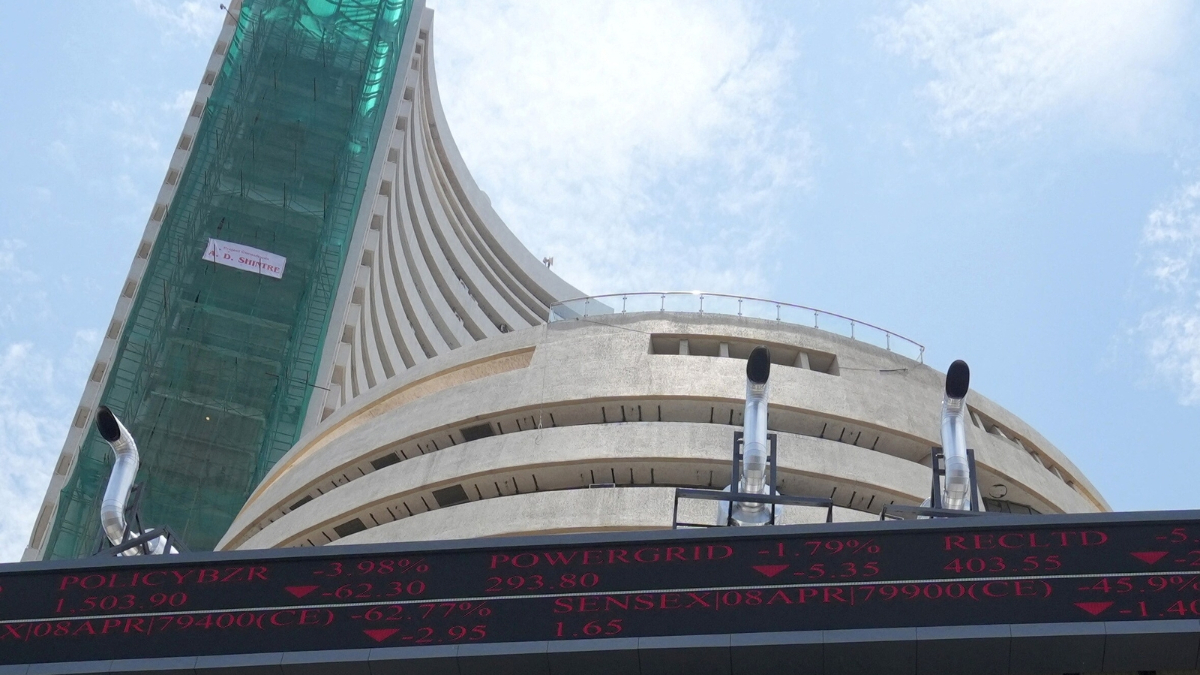Now Reading: Global Jitters Drag Down Indian Stock Markets in Early Trade
-
01
Global Jitters Drag Down Indian Stock Markets in Early Trade
Global Jitters Drag Down Indian Stock Markets in Early Trade

New Delhi, November 21, 2025: Indian benchmark equity indices, the Sensex and Nifty, opened the trading day on a cautious and negative note, snapping a period of relative resilience. This early-morning slump is a direct reflection of weakness across global markets, as concerns over stretched valuations in key sectors and a cloudy outlook for US interest rates prompt investors worldwide to pull back from riskier assets.
The Global Tremors: What’s Shaking Markets?
The primary catalyst for the domestic market’s decline can be traced back to a dramatic overnight sell-off on Wall Street and subsequent widespread losses across Asian exchanges.
1. The AI Valuation Scare
A significant part of the recent global market volatility is centered on the frenzy around Artificial Intelligence (AI) stocks, particularly in the United States.
- The Tech Sell-off: Despite a blockbuster earnings report from a key chip bellwether, which initially sparked optimism, the enthusiasm quickly faded. This suggests that investors are becoming increasingly wary of the high valuations in the AI sector, fearing a potential “bubble burst.” The tech-heavy Nasdaq Composite, a crucial global barometer, experienced a sharp decline, signaling a retreat from high-growth technology shares.
- The Spillover Effect: Because the US tech giants hold such significant weight in global indices, their sharp decline has a profound effect on overall global risk appetite, leading to a domino effect on other markets, including those in Asia and India.
2. Uncertainty on US Interest Rates
Another major concern for global investors is the mixed messaging coming from the US labor market data.
- Mixed Jobs Data: Recent employment reports in the US have provided an unclear signal about the health of the labor market. While some data points suggest job creation, the overall picture leaves investors uncertain about the Federal Reserve’s next move on interest rates.
- Dampened Rate Cut Hopes: This ambiguity has dampened hopes for an imminent interest rate cut by the Federal Reserve. Higher-for-longer interest rates in the US tend to make US assets, like Treasury bonds, more attractive, often leading to capital outflows from emerging economies like India.
Indian Market’s Response: A Cautious Start
Following the global cues, the Indian equity markets opened in the red, with the BSE Sensex and the NSE Nifty 50 recording declines in the initial hours of trade.
- The Numbers: The Sensex and Nifty fell below key levels in the morning, indicating broad-based selling pressure.
- Sectoral Weakness: The global risk-off sentiment was visible across various Indian sectors. Heavyweights, particularly those in the Metal and IT sectors, were among the biggest losers, reflecting the global uncertainty. IT companies, which derive a significant portion of their revenue from the US market, are especially sensitive to movements in the Nasdaq.
Understanding the Indian Market’s Resilience (and Vulnerability)
While the Indian market has been pulled down by global factors, many experts suggest that India is showing a degree of resilience compared to its global peers.
The Shield: Domestic Strengths
- “Anti-AI Play” Advantage: Analysts point out that the Indian market does not have the same concentration of high-valuation AI pure-play stocks as the US. Since India did not fully participate in the most extreme part of the global AI-led rally, it may not fall as sharply during the AI-driven correction. If the AI trade fades, capital may rotate into non-AI stocks and markets like India, which are seen as having more stable valuations.
- Strong Domestic Institutional Investor (DII) Buying: Domestic mutual funds, insurance companies, and retail investors have consistently been net buyers in the Indian market. This steady inflow of domestic money acts as a powerful buffer, cushioning the market against large-scale selling by Foreign Portfolio Investors (FPIs).
- Positive Local Outlook: The long-term narrative for India remains strong, backed by robust economic growth, improving corporate earnings, and the anticipation of policy support. Recent signals of progress on a potential India-US trade agreement have also boosted long-term sentiment.
The Leash: Global Links
However, the Indian market cannot completely detach itself from global developments.
- FII Selling Pressure: When global risk appetite drops, Foreign Institutional Investors (FIIs) often become net sellers in emerging markets like India, withdrawing capital to seek safer havens. This FII outflow can put significant pressure on Indian stocks and the value of the Indian Rupee.
- Monetary Policy Ripple Effect: The US Federal Reserve’s decisions on interest rates have an indirect, yet powerful, impact on the Reserve Bank of India (RBI). If the Fed maintains high rates, the RBI may feel constrained from cutting domestic interest rates to protect the Rupee from excessive depreciation, even if domestic inflation data suggests room for a cut.
Investor Strategy: Navigating Volatility
For the average investor, the current market environment demands a strategic and patient approach.
- Avoid Panic Selling: Market corrections driven by global volatility are common. Long-term investors are generally advised to avoid making impulsive decisions based on short-term dips.
- Focus on Quality: Market experts are strongly recommending a focus on “fairly-valued, high-quality stocks” and using these market declines as a buying opportunity. The strategy is to buy good stocks at lower prices and wait patiently for the inevitable market recovery.
- Beware of Speculation: There are warnings against excessive speculative trading, especially in certain high-flying mid- and small-cap stocks, as market volatility can quickly erase speculative gains.
Conclusion: A Pause, Not a Reversal
The early trade fall in the Indian stock market is less a reflection of domestic weakness and more a symptom of a global shift in investor sentiment, driven by AI valuation fears and US interest rate uncertainty.
While the indices are down today, the underlying strength of the Indian economy, coupled with consistent domestic flows, provides a strong support structure. The current phase is likely a period of heightened volatility and consolidation, as the market waits for clarity on the global front. Investors with a long-term view should use this dip as a moment for selective accumulation, sticking to a disciplined investment strategy.










